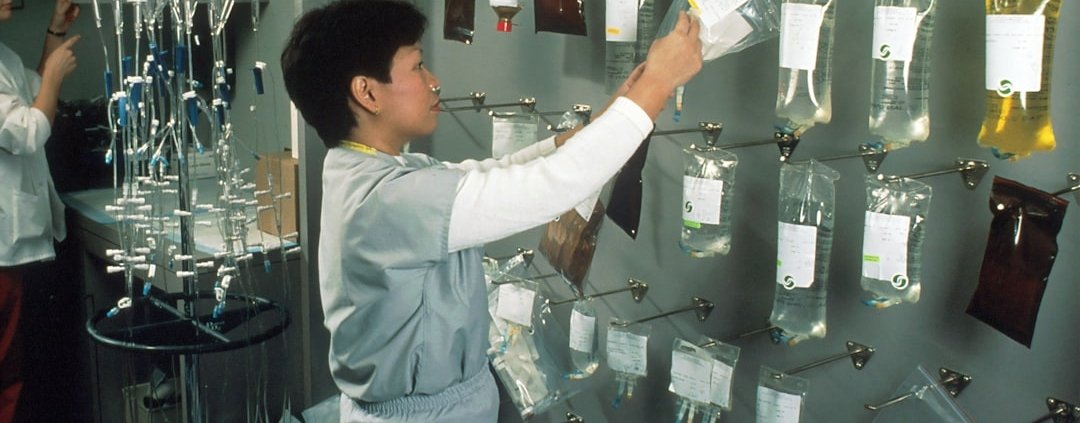At Home Ketamine: 3 Powerful Benefits in 2025
At home ketamine is becoming an increasingly popular choice for people seeking rapid mental health relief without the barriers of traditional therapy settings. This innovative approach allows individuals to experience ketamine therapy’s benefits from the comfort and privacy of their own homes. For those frustrated by slow results from conventional treatments or facing challenges like insurance limitations, this option offers a promising alternative.
- Rapid Relief: Experience quicker symptom alleviation compared to traditional therapies.
- Discreet Access: Receive treatment privately, without the need for in-office visits.
- No Prescription Required: Access convenient therapy options without a formal prescription.
Mental health challenges affect millions, leading many to explore alternative solutions like ketamine therapy. Approved by the FDA for anesthesia and pain management, ketamine has shown promise off-label for treating depression, anxiety, and PTSD. Despite its therapeutic potential, traditional administration methods can be costly and inconvenient. At-home ketamine treatment bridges this gap, providing a practical, effective option for those in need.

At home ketamine terms explained:
Understanding At-Home Ketamine
At-home ketamine treatments are changing the landscape of mental health care. Oral ketamine, particularly in the form of ketamine lozenges, is at the forefront of this change. These lozenges dissolve under your tongue, allowing ketamine to be absorbed directly into your bloodstream. This method is less invasive than traditional intravenous (IV) infusions and can be administered from the comfort of your home.
Telehealth plays a crucial role in making at-home ketamine accessible. Virtual consultations allow healthcare providers to evaluate patients remotely, ensuring they are suitable candidates for ketamine therapy. This approach not only saves time but also breaks down geographical barriers, allowing more people to access potentially life-changing treatment.

Ketamine Lozenges: A Closer Look
Ketamine lozenges offer a convenient and discreet way to manage mental health conditions such as depression and anxiety. Here’s why they are gaining popularity:
- Ease of Use: Simply place the lozenge under your tongue and let it dissolve.
- Control: Patients can manage their treatment schedule without frequent clinic visits.
- Flexibility: Lozenges can be adjusted in dosage, providing a personalized treatment plan.
The Role of Telehealth
Telehealth has revolutionized how patients and providers interact. For at-home ketamine therapy, it means:
- Accessibility: Patients in remote or underserved areas can receive care without traveling.
- Convenience: Appointments can be scheduled around your lifestyle, reducing disruptions.
- Continuous Support: Patients have ongoing access to medical guidance and support.

As at-home ketamine becomes more mainstream, it’s important to understand how these treatments work and what to expect. This knowledge empowers patients to make informed decisions about their mental health care, opening doors to new possibilities.
Benefits of At-Home Ketamine
At-home ketamine therapy offers several compelling benefits for those struggling with mental health issues. Let’s explore how this innovative treatment can make a difference:
Neuroplasticity
One of the standout features of ketamine is its ability to stimulate neuroplasticity. This means it helps the brain form new connections, which is crucial for healing. When ketamine enters the brain, it encourages neurons to grow and connect more effectively. This can lead to significant improvements in mood and cognitive function. Studies have shown that ketamine’s impact on neuroplasticity can help reduce symptoms of depression and anxiety by essentially “rewiring” the brain to foster healthier thought patterns. Learn more about neuroplasticity and ketamine.
Rapid Relief
Unlike traditional antidepressants, which can take weeks to start working, ketamine often provides rapid relief. Many patients report feeling better within hours of their first dose. This quick action is especially beneficial for those in acute distress or experiencing severe symptoms. A majority of patients see improvement after just a few sessions, with some experiencing relief after their very first treatment. This makes at-home ketamine an attractive option for those who need immediate support. Find how quickly ketamine works.
Mental Health Improvement
Ketamine therapy has shown promise in improving overall mental health. By promoting neuroplasticity and providing rapid relief, it helps patients achieve a more stable and positive mental state. Furthermore, the therapeutic experience of ketamine can offer new perspectives and insights, facilitating emotional healing. Patients often report feeling more resilient to stress and better able to manage their emotions. This holistic improvement in mental health can lead to long-lasting positive changes in a person’s life. Read about patient experiences with ketamine.
In summary, at-home ketamine therapy offers a unique combination of benefits that can significantly improve mental health. By fostering neuroplasticity, providing rapid relief, and enhancing overall well-being, it represents a promising option for those seeking alternative treatments for depression and anxiety.
How At-Home Ketamine Works
At-home ketamine therapy is a modern approach that uses the brain’s chemistry to improve mental health. Here’s how it works:
Brain Chemistry
Ketamine impacts the brain by altering its chemistry. When introduced, it boosts the production of glutamate, a neurotransmitter that plays a key role in mood regulation and cognitive function. This increase helps improve communication between brain cells, leading to improved mood and reduced symptoms of depression and anxiety. By stimulating these chemical changes, ketamine acts quickly, often providing relief much faster than traditional treatments.
Therapeutic Experience
Beyond its chemical effects, the therapeutic experience of ketamine can be profoundly transformative. During a session, individuals often report feeling relaxed and introspective. This state can help them gain new perspectives on life and their mental health challenges. The experience can facilitate emotional healing by allowing individuals to process and reframe past traumas or negative thoughts in a supportive environment. This therapeutic aspect is a crucial component of the overall treatment, helping to foster a sense of well-being and resilience.
Neural Pathways
Ketamine’s ability to stimulate neuroplasticity is one of its most powerful effects. By encouraging the growth and strengthening of neural connections, it helps the brain form new pathways. These new pathways can lead to healthier thought patterns and improved emotional regulation. This rewiring process is why ketamine is often described as healing the brain at its roots, offering a long-term solution rather than just temporary symptom relief.
At-home ketamine therapy leverages brain chemistry, provides a therapeutic experience, and fosters the development of new neural pathways to support mental health improvement. This comprehensive approach makes it a promising option for individuals seeking alternative treatments for conditions like depression, anxiety, and PTSD.
Safety and Considerations
When it comes to at-home ketamine therapy, safety and ethical considerations are paramount. While this treatment offers promising benefits, it’s important to be aware of the legal challenges, ethical concerns, and potential risks involved.
Legal Challenges
Ketamine is a controlled substance, and its legal status varies by region. In the United States, for instance, ketamine is classified as a Schedule III controlled substance, meaning it has recognized medical uses but also a potential for abuse. This classification requires careful monitoring and regulation. Patients must ensure they comply with local laws and obtain ketamine from a licensed healthcare provider. This legality ensures both the safety of the patient and adherence to medical guidelines.
Ethical Concerns
The rise of at-home ketamine therapy through online providers presents several ethical challenges. One major concern is the potential lack of comprehensive patient evaluation. In some cases, patients may not receive thorough assessments before starting treatment, raising questions about the appropriateness of ketamine for their specific condition. Additionally, the absence of in-person supervision during treatment can lead to ethical dilemmas regarding patient safety and the quality of care. It’s essential for providers to prioritize patient welfare over profit and ensure that all treatments are administered responsibly.
Potential Risks
While ketamine can offer rapid relief, it also comes with potential risks. One of the primary concerns is its potential for addiction. Although not physically addictive, ketamine can be psychologically habit-forming, especially for individuals seeking dissociation from their environment. It’s crucial for patients to use ketamine only as directed by a healthcare professional to avoid misuse.
Additionally, ketamine may cause side effects such as hallucinations, increased heart rate, and dissociation. These effects, while often temporary, can be distressing if not properly managed. Patients should be informed of these risks and monitored closely during treatment to ensure their safety.
In summary, while at-home ketamine therapy offers significant potential for mental health improvement, understanding the legal, ethical, and safety considerations is vital. This knowledge helps ensure that the treatment is both effective and safe for those who choose this path.
Frequently Asked Questions about At-Home Ketamine
What is the typical process for starting at-home ketamine therapy?
Starting at-home ketamine therapy usually begins with a telehealth consultation. During this appointment, a healthcare provider will assess your mental health history, current medications, and treatment goals. This step ensures that ketamine is a suitable option for you.
Once approved, you might receive a prescription for ketamine crystals. These can be filled at a compounding pharmacy and picked up or delivered to your home. Some providers offer initial higher-dose infusions to stabilize your condition before transitioning to crystals for maintenance.
Throughout the treatment, you’ll have access to healthcare professionals via virtual check-ins or messaging to discuss your progress and any concerns.
How is the dosage of at-home ketamine determined?
The dosage of at-home ketamine is personalized. It starts with your initial consultation, where your provider reviews your health information. Based on this, they determine the most suitable starting dose for you.
Your treatment is closely monitored. After each session, you’ll share your experiences, allowing your provider to adjust the dosage if necessary. This iterative process ensures that the treatment remains effective and custom to your individual response.
Are there any side effects or risks associated with at-home ketamine?
Yes, there are potential side effects and risks with at-home ketamine therapy. Common side effects include vivid dreams, hallucinations, and mood swings. These are usually short-lived but can be unsettling.
More serious risks involve increased heart rate and blood pressure. Patients with pre-existing heart conditions should discuss these risks with their healthcare provider.
Ketamine can also be psychologically habit-forming. It’s crucial to follow your provider’s guidance and avoid self-adjusting your dose.
Understanding these risks and maintaining open communication with your healthcare team can help manage any adverse effects and ensure a safer treatment experience.

































